[notes of baristas in front street] Japanese ice hands flush "ice cubes": how appropriate is the proportion of "hot water"?
As mentioned yesterday ["hot hand flush" + "ice cube" ≠ Japanese ice hand flush], according to the comparison of yesterday's experiments, the ratio of powder to hot water is 1:10, 1:13 and 1:15 respectively. At the same time, the ratio of total powder to water after adding 100g of ice becomes 1:15, 1:18 and 1:20, and the flavor of the hot coffee liquid will be lighter after being diluted with ice, even because the amount of ice is not enough. In the ratio of total powder to water at 1:18 and 1:20, the coffee is still warm, and only ice particles still exist at the ratio of 1:15 to total powder.
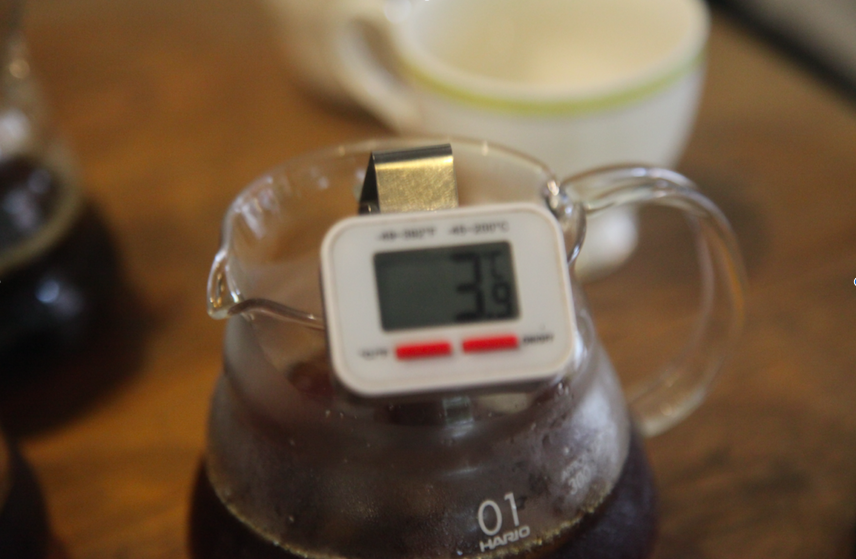
So what should be the ratio of "hot water" to "ice cubes" when doing Japanese ice hand flushing? Can it not only have a strong coffee flavor, but also keep the ice warm?
First of all, the premise parameter we set is what is the flavor of the ice hand extracted by changing the ratio of "ice" to "hot water" when the ratio of total powder to water is constant, the amount of powder is constant, and the degree of grinding is the same as the water temperature.
It was also tested today with beans from the Pillon processing plant in Costa Rica.
| | Bean information |
[Costa Rica Pillon processing Plant]
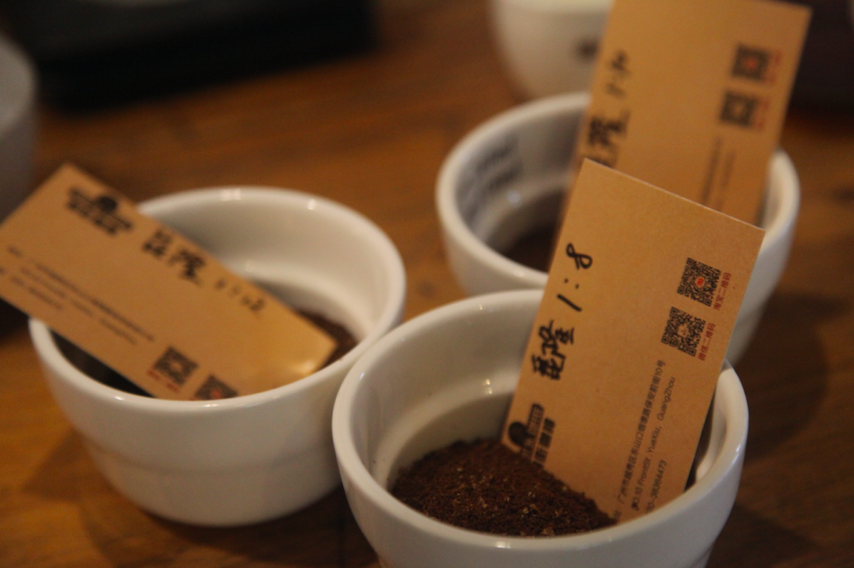
Country: Costa Rica
Producing area: Tarazhu
Altitude: 1700-1800m
Treatment: sun treatment
Grade: SHB
Variety: Kaddura, Kaduai
Baking degree: shallow and medium baking
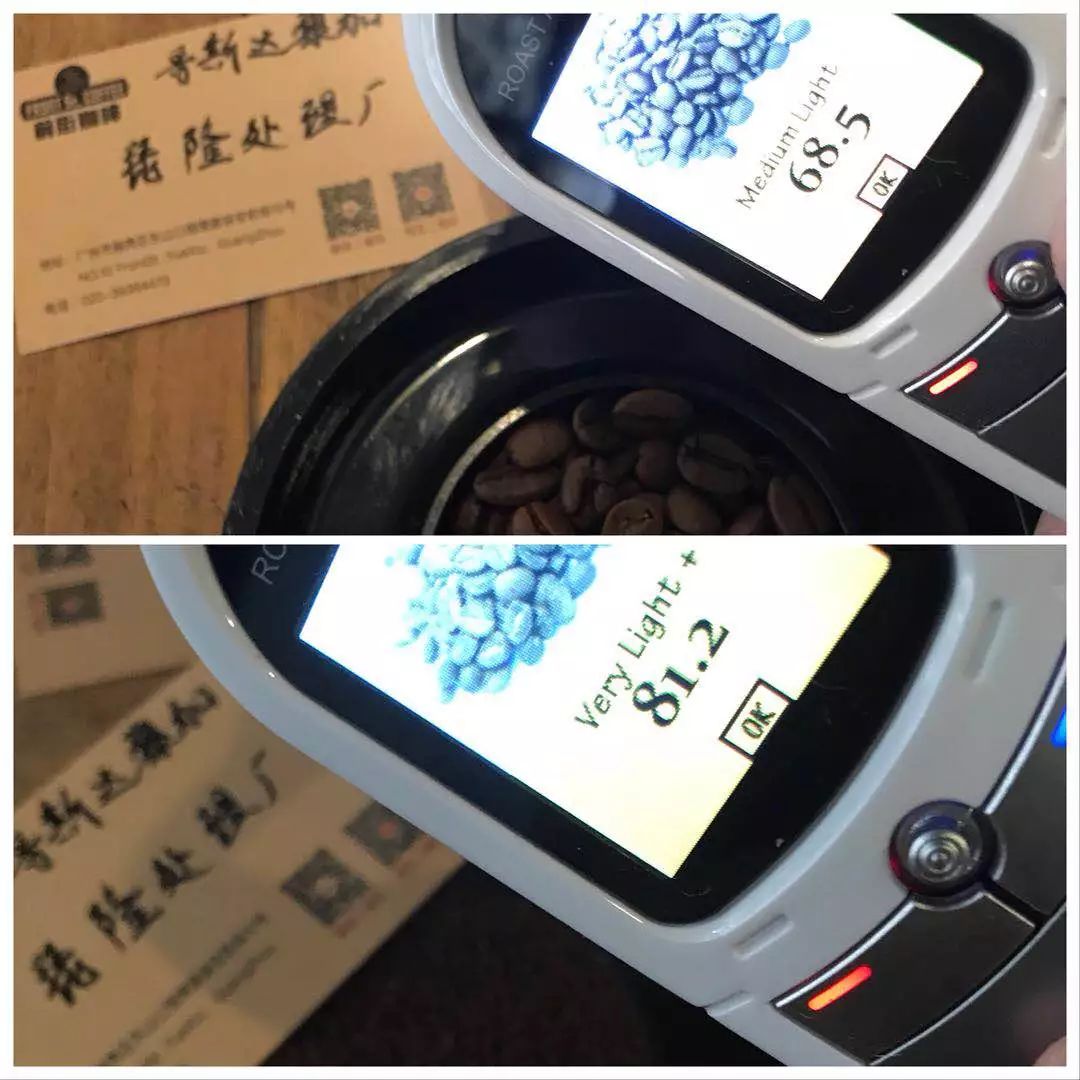
The Agrton bean color value is 68.5 (above), the Agrton pink value is 81.2 (bottom), and the Roast Delta value is 12.7.
Prerequisite parameters: coffee powder 20g / total powder / water ratio 1 15 / ice + hot water 300g / water temperature 90 ℃ / grindability BG-5M
[powder: hot water 1:8 | Hot water: ice 8:7]
Technique: put 140g ice in the sharing pot; add powder, steam in 37g hot water for 30 seconds, pour water to 118g powder bed, then pour to 163g, drip the coffee liquid into the sharing pot and remove the filter cup; the total time is 1: 47 "(at this time, there is still a lot of unmelted ice, the temperature is 3.2 ℃).
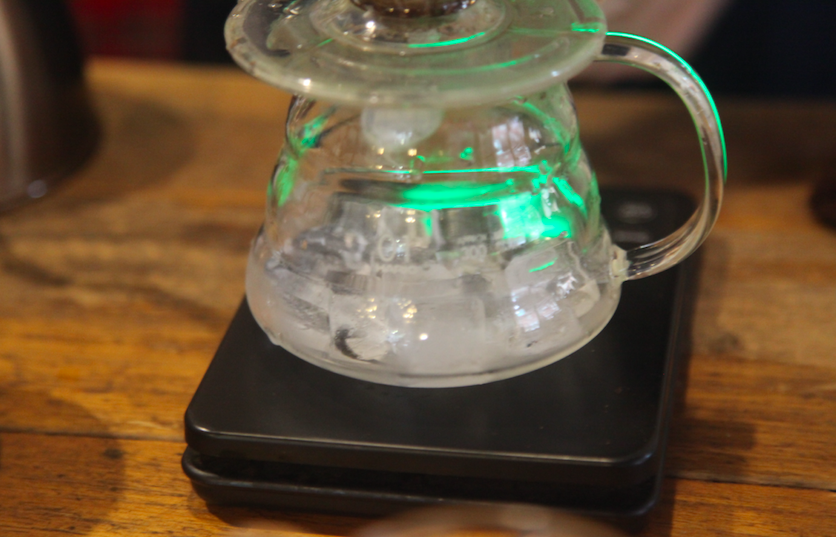
Flavor: fermented wine, orange, sandalwood, caramel, cocoa, taste is relatively rich, sour taste is soft; ice completely melted taste and flavor become light, but tropical fruit flavor becomes very clear, clean, and smell has a strong durian sugar aroma.
[powder: hot water 1:10 | Hot water: ice 2:1]
Technique: put 100g ice in the sharing pot; add powder, steam in 40g hot water for 30 seconds, pour water to 124g powder bed, then pour to 200g, drip the coffee liquid into the sharing pot and remove the filter cup; the total time is 2 minutes (this pot will contain less ice than 1:8, the temperature is 9.1 ℃)
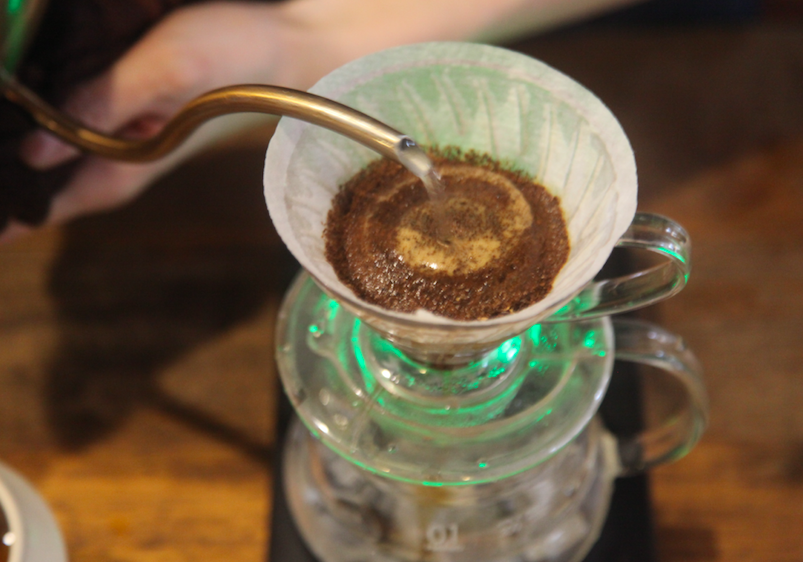
Flavor: citrus, strawberries, spices, fermented wine, cinnamon, the overall feeling of sweet and sour balance, outstanding berry flavor; ice completely melted taste clean, refreshing and not too light, with ripe fruit aromas, like a cup of fruit tea, smells like jackfruit.
[powder: hot water 1:12 | Hot water: ice 4:1]
Technique: put 60g ice in the sharing pot; add powder, steam in 42g hot water for 30 seconds, pour water to 122g jian, then pour into the powder bed, then pour to 239g. The coffee liquid drips into the sharing pot and removes the filter cup; the total time is 22026 "(when the ice has completely melted and the coffee is still warm, the temperature is 38.8℃).
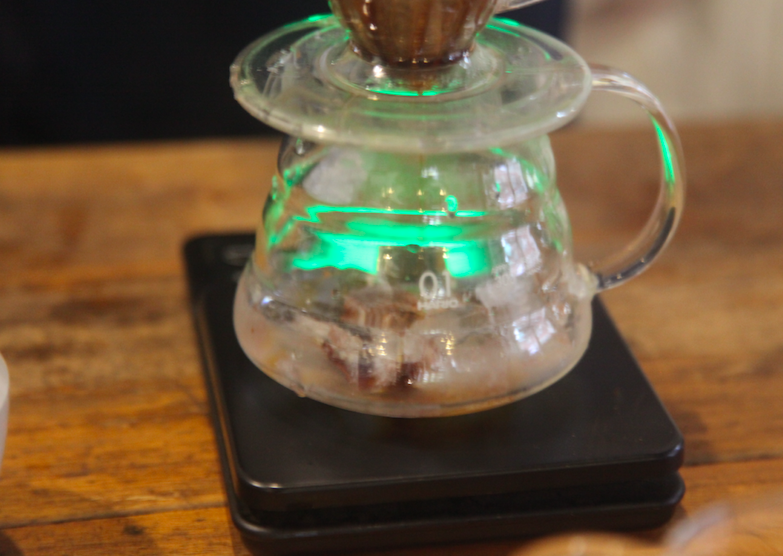
Flavor: fermented fruit, caramel, spices, licorice, hazelnut, citrus, the overall flavor is balanced, probably because it is still warm, so the aroma is mainly nut and fermented, and it is also more caramel and nut flavor. fruit aroma and fruit acid are soft.
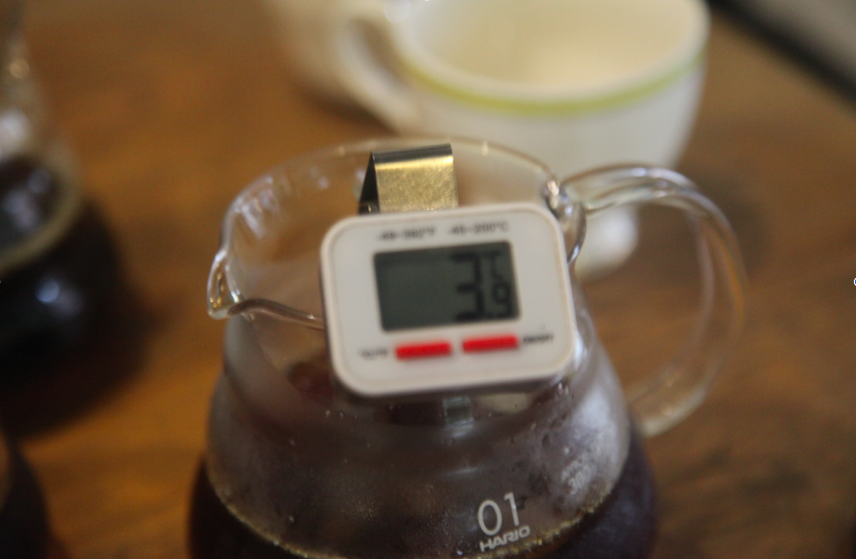
After the above experiment, the editor felt that under the premise that the ratio of total powder to water remained unchanged, after changing the ratio of "ice" to "hot water", it was found that [powder: hot water 1:8] the flavor was the strongest among the three cups before the ice completely melted. After the ice completely melted, due to the large amount of ice, so the overall flavor is the weakest. In the process of hot water extraction of coffee, the amount of water is less and the extraction rate is not high, which mainly shows the sour and sweet of the fruit, and the aroma of the fruit becomes clearer after the dilution of ice, but the flavors such as nuts and caramel are extracted less. the flavor is more concentrated before the ice melts, so it can still be felt, but it becomes weak when the ice melts completely.
[powder: hot water 1:10] the amount of water is moderate and the extraction time is about the same as the usual hot hand extraction time, but the proportion has been reduced, so the coffee flavor extracted by increasing the concentration is more complete. When the ice completely melts, it happens to be the ratio of hot hand powder to water at 1:15, so even after dilution, the flavor is better and the sweetness will be more prominent.
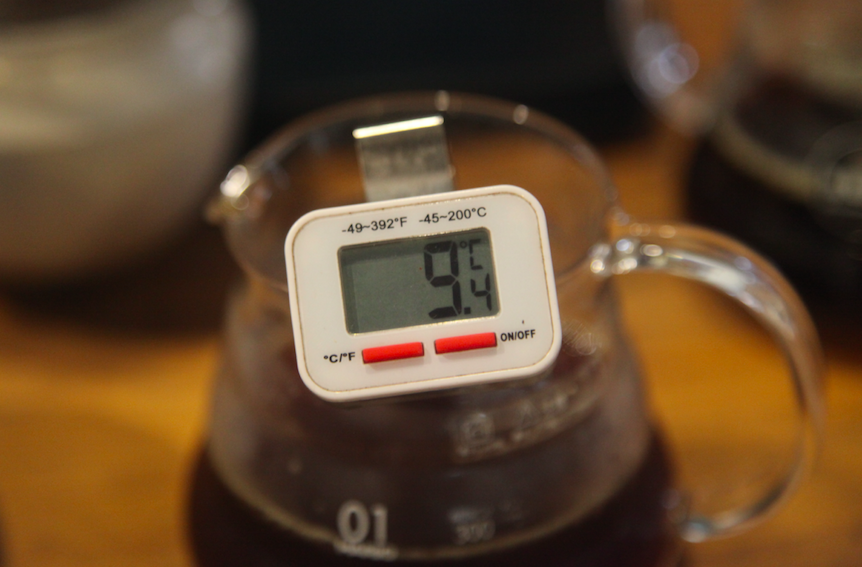
[powder: hot water 1:12] the editor feels that this is no longer a pot of iced coffee, because after the extraction, the ice has completely melted, and the coffee is still warm. Even if its flavor and aroma are very full, but its parameters in the ice hand can not be used at all.
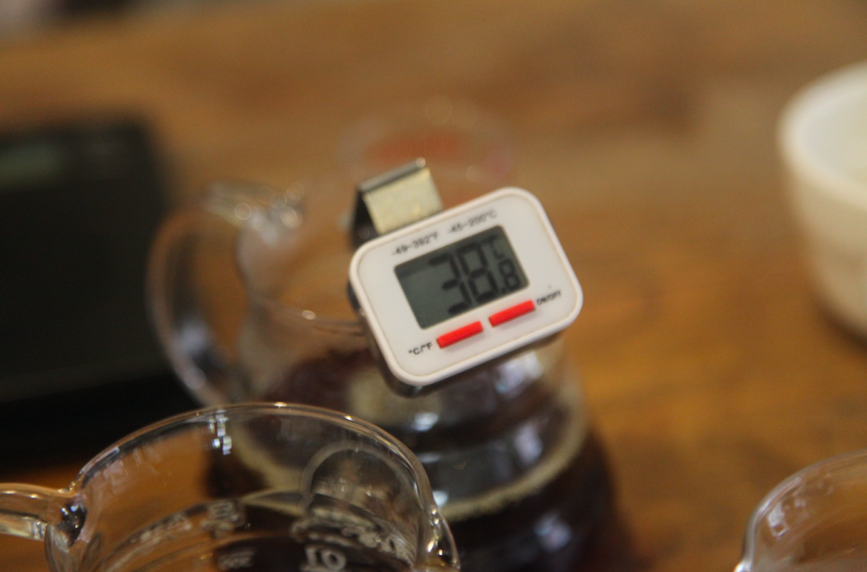
Finally, the editor thinks that when choosing the ratio of "hot water" to "ice cubes", you can first consider the bean flavor you want to express, and those who want fruit flavor can consider the proportion of [1:8]. Those who like the sense of balance and the flavor will not change much after melting ice can consider the proportion of [1:10].
Important Notice :
前街咖啡 FrontStreet Coffee has moved to new addredd:
FrontStreet Coffee Address: 315,Donghua East Road,GuangZhou
Tel:020 38364473
- Prev
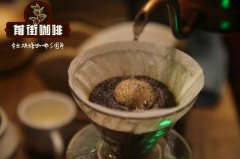
What is very shallow baking? Does very shallow roasted coffee have to be sour? How to bake coffee in very shallow water
Professional coffee knowledge exchange more coffee bean information Please pay attention to the coffee workshop (Wechat official account cafe_style) the well-known roasting degree of coffee is the American term light roasting, medium roasting, deep (heavy) roasting, which can be subdivided into 8 stages, and the difference of roasting degree varies with different regions. The roasting degree and flavor are briefly introduced as follows: (1) Light Roast:
- Next
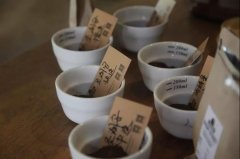
What is the effect of the speed of water injection on the flavor of hand-brewed coffee?
Professional coffee knowledge exchange more coffee bean information please follow the coffee workshop (Wechat official account cafe_style) when it comes to hand-brewed coffee, steaming this stage can be said to be very important, after all, so that coffee powder can be fully vented process! When it comes to steaming, the first reaction is the length of steaming time and the amount of steaming water, but I don't know.
Related
- What is the meaning of lactic acid fermentation with coffee bean treatment?
- How to judge the state of foam by sound?
- How does the latte pull out the unicorn pattern? Come to get for a little trick to improve the flower pull!
- Will flower pulling affect the taste of the latte?
- Do you know the history of coffee?
- The difference between honey treatment and sun washing what is raisin honey treatment?
- What kind of milk can a novice use to make coffee foam to keep the foam longer? The correct method and skills of milking tutorial sharing
- Why do washed coffee beans taste sour? Flavor characteristics of washed Coffee
- Introduction to the skill of how to practice the size and height of water injection around the circle of hand-brewed coffee
- How do beginners practice coffee flower drawing from scratch?

